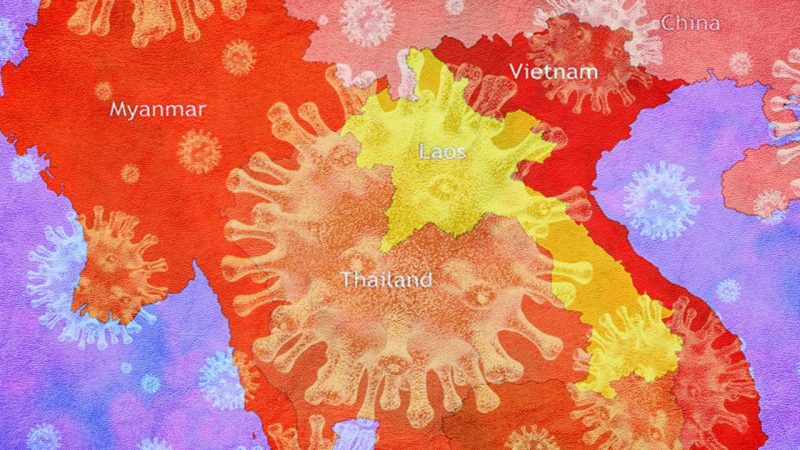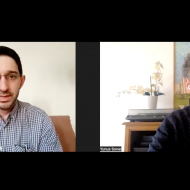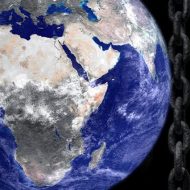Despite its geographical proximity to China, which became the center of the new coronavirus’ spread in early 2020. The virus spread slowly in the region for the first two months of the year, but there has been explosive growth in cases since mid-March.
Thailand: royal isolation
In October 2019, Thailand was ranked sixth by the WHO in terms of preparedness for mass epidemics (the only developing country in the top ten). In early January, Thailand became the first country to register cases of the new coronavirus outside China.
Thailand responded promptly by establishing screening, contact tracing and quarantine protocols for suspected cases. In February, a curfew was imposed between 10pm-4am. The entry of foreigners into the country has been stopped since February.
However, Thai nationals can still return to their home country. However, those entering from China (including Hong Kong and Macao, South Korea, Italy and Iran) must carry medical certificates and be quarantined.
During the first two months, the Government was able to contain the spread of the disease through these measures. The number of people infected did not exceed 100. However, on March 23, 721 people were already registered with the disease. There are now 2,369 persons with coronavirus in Thailand.
As a result, the Thai Government has tightened its measures by postponing the large Songkran holiday and closing schools, shopping centres and other public places. Bangkokers and outsiders are urged not to travel outside the city to avoid spreading infections throughout the country.
At the end of March, the government imposed a broad lockdown in the country, halting almost all activities until the end of April, closing borders, and restricting social gatherings, banning travel between provinces and closing all shops except the essential ones.
In the midst of the Coronavirus epidemic, Thailand’s Maha Vachiralongkorn, better known as Rama X, has self-isolated in a fashionable hotel in Germany with 20 concubines and servants.
#vajiralongkorn #thailand #ป https://t.co/i6yhMW56KK
— THAILAND_for_FUTURE (@THAILAND_FUTURE) April 2, 2020
This time, however, in the midst of a global health crisis, the King’s presence in Europe is being severely criticized in the country, with anti-monarchist sentiments rising among the people.
Vietnam: socialism proves effective
The first cases of the novel coronavirus in Vietnam were recorded on January 23 when two tourists from China fell ill. To combat the epidemic, the government acted quickly and firmly. Air traffic with China was halted.
The Vietnamese People’s Armed Forces participated in patrols and control measures. On March 31, 2020, the Vietnamese Government ordered nationwide isolation for 15 days from April 1 to 15. Even earlier in February, schools were closed.
Vietnam was also the first country outside of China to quarantine a large part of the country, closing a part of the province north of Hanoi in mid-February after residents returning from Wuhan were diagnosed.
To date, only 249 cases of COVID-19 have been reported in Vietnam, none of which have resulted in death. The global media has generally been positive about the Vietnamese experience.
Vietnam capital city puts village of 11,000 people on lockdown over coronavirus fear https://t.co/ncAG6OjtP1 pic.twitter.com/9V7e7CW6xl
— Vietnam Insider (@InsiderVietnam) April 8, 2020
In contrast to other East Asian countries, Vietnam could not apply high-tech control measures and large scale disease testing. However, the policy of the Communist Party of Vietnam has proved its effectiveness.
The country’s leadership was able to mobilize society, isolate people with symptoms and track their contacts, isolate travelers, and attract retired medical students, doctors and nurses to work.
Laos: the benefits of closure
The first case of a new type of coronavirus in Laos was recorded on March 23. So far, 14 cases have been reported.
The measures taken by the Lao government differ little from other countries in Southeast Asia. The specifics of Laos are relative poverty and low levels of urbanization. On the one hand, this limits the spread of the disease, on the other hand, it cannot be said to what extent the official figures on COVID-19 infections are true.
On April 30, the Lao government introduced additional control measures: residents were forbidden to leave their homes. Provincial boundaries were closed until April 30. Borders and roads to neighboring countries: Thailand, Vietnam and Myanmar were also closed.
China sent medical experts, equipment and supplies, to help Laos fight COVID-19. Vietnam also offered help for neighboring countries. The simultaneous offer of assistance demonstrates Vietnam’s and China’s traditional competition for influence in the region, which has been intensified by the epidemic.
Both China and Vietnam have coped with the epidemic and are now trying to use the weakening of neighboring countries to increase their influence.
Myanmar: dual power crisis
Since February, the Myanmar Parliament has been attending sessions exclusively in medical masks due to the danger of new coronavirus infection. However, the first case of a new type of coronavirus in the country was recorded on March 23.
As of April 7, 22 cases of new coronavirus were registered in Myanmar. The first case ended in death.
However, the ability of the country’s health system to cope with the epidemic if the number of cases continues to grow is highly questionable. There are only 80 artificial lung ventilation devices in the country.
It should also be taken into account that since the declaration of the country’s independence in the middle of the last century, a civil war has been waged in Myanmar between the central authorities and separatists on the outskirts of the country.
The #Tatmadaw (military) rejected on Wednesday calls for ceasefire amid the rising number of COVID-19 cases in the country, where 15 patients and one death have been reported in nine days. #Myanmarhttps://t.co/6RQxlUalYK
— Michelle Yesudas (@chelle_yesudas) April 2, 2020
According to a report by Human Rights Watch (HRW), there are 350,000 internally displaced people in Myanmar, including Muslims Rohingya. They live in camps where overcrowding and poor sanitation can contribute to the spread of the disease.
In the country, the fight against the disease has been entrusted to a power struggle between the country’s civilian authorities, led by State Counsellor Aung San Suu Kyi and it’s and the powerful military, which in the recent past formed a military junta that ruled the country. In February and March, the National League for Democracy tried to push for constitutional changes that would reduce the role of the military in the country. However, they failed to do so.
In mid-March, the government of the National League for Democracy established the Covid-19 committee led by State Counsellor Aung San Suu Kyi. The military then formed its own crisis task force led by the first vice president, U Myint Swe.
The military is taking the opportunity to concentrate information and power in their hands. The task force led by the military is to investigate cases, trace contacts of confirmed cases and clamp down including through arrests on “fake news” and “disinformation” that could cause “panic among the people.” However, no formal national quarantine has been introduced.
Cambodia: pro-China policy
In Cambodia, the first case of the new coronavirus was reported on January 27 by a Chinese citizen who arrived from Wuhan. To date, 115 cases of new coronavirus have been reported in Cambodia, most of them are from foreign tourists.
In mid-March, the Cambodian government banned entry to its country from Italy, Germany, Spain, France and the United States. However, prime minister Hun Sen declined to enact travel restrictions against China and did not postpone planned military exercises with them, which was perceived in the West as an indicator of dependence on Beijing. Western human rights organizations criticize the Cambodian authorities for arresting at least 17 people who were distributing information that the authorities thought was inaccurate. Among them are several members of the opposition Cambodia National Rescue Party (CNRP).
On March 31, the Cambodian government approved a bill authorizing the imposition of emergency quarantine measures, including surveillance of telecommunications and control of media and social media. Casinos, which are part of a powerful gambling industry focused on foreigners (for Cambodian nationals, gambling is prohibited) have been closed since April 1 and schools in the country have also been closed.
To a large extent, the Cambodian authorities rely on China for help in the fight against the coronavirus: both Chinese medics and the necessary equipment from China. At the same time, the opposition criticizes the authorities for not applying to Vietnam for help.
11 Khmer Muslims were found to be infected in various provinces. They were among 79 people returning from attending a mosque event in Malaysia that is believed to be behind the sharp increase of COVID-19 infections in the region.
Malaysia: leader of the sick
On March 16, the Government of Malaysia imposed a total ban on foreigners, including tourists, from entering the country. This was announced by Prime Minister Muhiddin Yassin in a televised address on Monday. He issued the so-called “Movement Control Order (MCO)” which was extended until April 14.
The Prime Minister also said that Malaysian citizens are not allowed to travel abroad. According to him, “all Malaysians returning from other countries will be placed in a two-week quarantine.” He also noted that the Government imposes a total ban on public events, including religious, cultural and sports events.
In addition, the Prime Minister announced the closure of all universities, religious, private and public schools and preschools. Hundreds of people have been arrested for breaches of the quarantine regime. The country’s armed forces were patrolling the streets and used drones to identify violators.
Beginning April 1, residents are only allowed to travel 10 km away from home to buy basic necessities and medicines.
Despite these measures, the number of COVID-19 cases in Malaysia has already reached more than 1,000 on March 23 and continued to grow rapidly.
There are now 3,963 cases of coronavirus in Malaysia. This makes it a leader in the region in terms of the number of cases in the region.
The spike in coronavirus cases in Southeast Asia is associated with the event at The Tabligh Akbar, Kuala Lumpur Mosque. The event was held in late February by the local branch of the Pakistani sect of Tablig Jamaat, with 16,000 people taking part. This included local Muslims as well as Singapore, Indonesia, Thailand, Cambodia, Vietnam, Brunei and the Philippines. Many participants in this meeting then were identified as infected by the novel coronavirus.
Brunei: a test for the Islamic monarchy
In particular, a pilgrim who returned from Malaysia was the first resident of Brunei to be infected with the coronavirus. There are now 135 people in Brunei who have been infected. However, most of them are associated with an unfortunate gathering at a mosque in Malaysia. For a country of only half a million people, that’s a significant figure: 310 cases per million. In comparison, in China it was 124 cases per million people, and Malaysia 100 cases per million.
Since March 24, Brunei has closed the entry (for foreigners) and exit (for all) from the country. All citizens arriving from abroad are required to undergo a 14-day quarantine. Mass meetings of citizens, weddings and sporting events are prohibited. Meetings and general prayers in mosques are also suspended, which is unusual in a religious country where even Christmas and Santa Claus are forbidden due to lack of conformity with Islamic norms. Sultan Hassanal Bolkiah of Brunei called on all citizens to pray for deliverance from the coronavirus.
Indonesia: the leader in deaths
In Indonesia, there are 2,738 coronavirus sufferers. The country is ranked third in the region after Malaysia and the Philippines for this indicator. At the same time, Indonesia has the highest growth rate in the region with more than 200 people per day and the highest mortality rate with 221 deaths from the coronavirus.
Suherman, is 45 years old, makes a coffin at a workshop inside a funeral complex in Jakarta, Indonesia, April 8, 2020. Coffin makers are overcome by the huge demand due to fatalities caused by #coronavirus outbreak. #news #photojournalism #COVID2019 #CoronaVirusIndonesia #Corona pic.twitter.com/67Zwi1pWov
— Garry Lotulung (@merantauuu) April 8, 2020
The country’s response to the coronavirus was rather weak, with authorities acting slowly and hesitantly. The high mortality rate is also associated with insufficient testing – as a result, only very serious cases of coronavirus become known, while others remain unnoticed by the country’s health system.
On March 2, President of Indonesia Joko Widodo announced the first coronavirus case in the country. However, other sources of coronavirus proliferation could not be traced. The government did not close the entry and exit of the country until April.
However, on March 27, a state of emergency was declared in the capital, Jakarta. But only cinemas, restaurants and bars were closed. Malls and grocery stores were opened when the authorities called for social distancing.
Only on April 7, the capital received additional rights from the government to severe the measures to tackle the COVID-19 outbreak. At the same time, full quarantine was not introduced even in Jakarta. In other regions of the country there were even fewer restrictions. There is no national quarantine, the regions impose various restrictions themselves. Major religious organizations in predominantly Muslim country called to the adherents to self-restrict from going to mosques.
Philippines: Emergency powers
The first confirmed case of COVID-19 was reported in Manila on January 30, when a Chinese native fell ill. In January-February, the novel coronavirus became a convenient excuse for the local pro-Western opposition to criticize President Rodrigo Duterte’s rapprochement with China. Anti-Chinese rumors were spread in the country. Coronavirus generated a new outbreak of anti-Chinese sentiment in the Philippines, probably the largest in Southeast Asia.
On January 31, Rodrigo Duterte did announce a ban on Chinese citizens entering the country. Nevertheless, the number of people infected with the coronavirus was growing, including senior members of the country’s Senate. There are now 3,870 Coronavirus patients in the Philippines.
In mid-March, President Duterte introduced a month-long quarantine in Manila and the surrounding areas, which was then extended to the entire island of Luzon where half of the country’s population – about 60 million people – live. The President also received three months of emergency powers from Congress and allowed the army and police to shoot all quarantine violators. The emergency powers also allow President Duterte to “reallocate, realign, and reprogram” about a half of Philippines budget $8.55 billion to combat the novel coronavirus outbreak.
President Rodrigo Roa #Duterte presides the Inter-Agency Task Force for the Management of Emerging Infectious Diseases (IATF-EID) meeting with several Cabinet members where he emphasizes that the welfare and safety of the #Filipino people remain the top priority of the government pic.twitter.com/RetF3dpD9Q
— PH News (@PHNews01) April 8, 2020
Entry of foreigners into the country since early April is prohibited (except for spouses and children of Filipinos).
ASEAN approach
All the countries mentioned above are part of the ASEAN regional bloc. Their representatives met as early as January to prepare a regional-wide response to the rapid spread of the coronavirus disease and continue to meet to evaluate the regional response. However, a common regional strategy to combat coronavirus has not been developed. Countries act at their own risk and according to their own devices.
All countries are taking measures to support their economies, but it is likely that after the peak of the epidemic they will have to invent means of stimulation at the level of the block itself, accumulating and redistributing funds which will require reaching a new level of integration. The alternative is to become more dependent on China. At the same time, it is unlikely that the coronavirus will reduce China’s influence; rather, on the contrary, China’s assistance will only increase.
At the same time, judging by the way the countries of the region have fought against the coronavirus, the most successful were the countries with Confucian cultures, particularly Vietnam and Singapore, about which we wrote in the previous article.









Leave a Reply